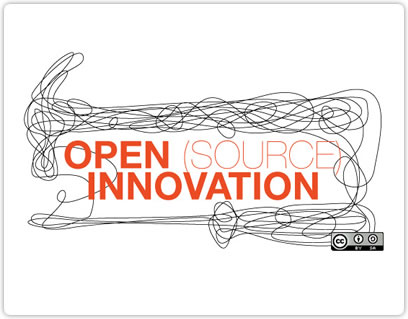Open source refers to source code that people can change, share and copy due to being publically available. This term originated with regard to software development and led to a certain way of creating computer programs. Access to the source code allows the user to understand how and why the software functions. This means that products can be easily improved and these improvements can be redistributed to others.
An open source product is recognizable by the fact that it can be downloaded without charge, the source code is visible, the area of use is not restricted, and the license does not place restrictions on other software. The license must also be approved by the Open Source Initiative (OSI). In contrast to public domain software and freeware, open software must allow the derived versions to be distributed to third parties free of charge.
 © Flikr by opensourceway
© Flikr by opensourcewayAlthough initial open source models such as UNIX were established in the 1960s, the term is mainly linked to Eric S. Raymond and his paper “The Cathedral and the Bazaar.” Raymond presented his essay in 1997. He used the image of the construction of a cathedral as a synonym for standard software development. The main architect supervises a group of specialists who work according to building plans until the building is completed. Mistakes are corrected later on. In contrast, the bazaar has numerous booths that are not subject to a superordinate hierarchy and offer their goods. What emerges is a self-organized group in which every individual can make a contribution. Mistakes are more rapidly found and can be solved with the help of several persons. According to Raymond, the bazaar model has proved to be more productive and effective.
Are you interested in the services of clickworker? Here you find all solutions!
Whilst Eric Raymond coined the term “open source” the man himself agrees that the term “open source software” or OSS was created by Christine Peterson whilst she was executive director at Foresight Institute. She states that introducing the term was an effort to make the endeavor more understandable to others. It had been previously known as “free software” but she was concerned that people then focused only on price rather than adaptability. Foresight is a nonprofit think tank working on nanotech and AI with a strong focus on software security. Christine was concerned that using the word “free” meant people just thought it didn’t cost money rather than it relating to freedom.
Other terms were considered during meetings such as “freely distributable”, “cooperatively developed”, “free software”, and “sourceware”. However, in the end, other experts such as Raymond and Todd Anderson agreed that “open source software” was better. To get the name out they convinced Tim O’Reilly of Netscape and O’Reilly Media to hold a meeting. In that meeting, it was decided that the upcoming “Freeware Summit” was to be renamed “Open Source Summit” and that he would help popularise the term “open source software”.
It is undeniable that open source has contributed a great deal to the development of software. In fact, there is a whole host of open source tools used today. These tools assist developers in improving and troubleshooting issues in the initial stages of developing software. It is also used to create, test, and maintain security protocols within software. Therefore, many companies use open source software for a variety of things linked to their business. This could be anything from a website design to product creation tools to security systems.
GNU is a large collection of free software packages that can be used as an operating system. GNU stands for Gnu’s Not Unix! Chosen by creator Richard Stallman because the design is like Unix but differs by being free and not using unix code. It can be used with kernels such as Linux to work as an easily modified operating system.
An open source media player, available for desktop and mobile platforms alike. Additionally, VLC can stream media over entire networks and transcode media files. Due to its packet-based nature, it can play almost all media files, including damaged or unfinished files.
Standing for Gnu Image Manipulation Program, GIMP is a popular image editor. Many people would like to use Photoshop and similar software but the cost can be quite prohibitive. GIMP can be used as a simple drawing/paint tool, for expert photo editing, mass rendering, and more.
A project of the Document Foundation, LibreOffice was released in 2011 after similar applications such as OpenOffice and StarOffice. This handy suite of programs includes word processing, slideshows, databases, and spreadsheets and is available in 115 languages!
The cost factor is definitely the most important issue for companies. Expensive licenses can be economized with the corresponding software. Operating systems based on Linux in particular are becoming increasingly popular. Since it is almost impossible to earn money with free software, companies have specialized in support, employee training and individual software solutions. Companies have financial benefits as well as more flexibility at their disposal because software can be quickly modified to meet the demands of specific projects than when they have to be newly written.
Those who wish to use open source for fun or non-profits can benefit again by it being free. However, this isn’t the only benefit, many people find that the open source communities are very welcoming. Additionally, there is a chance to learn more and gain new skills by being able to edit software. It also has the ability to help students learn and expand their skills going into the workplace after training.